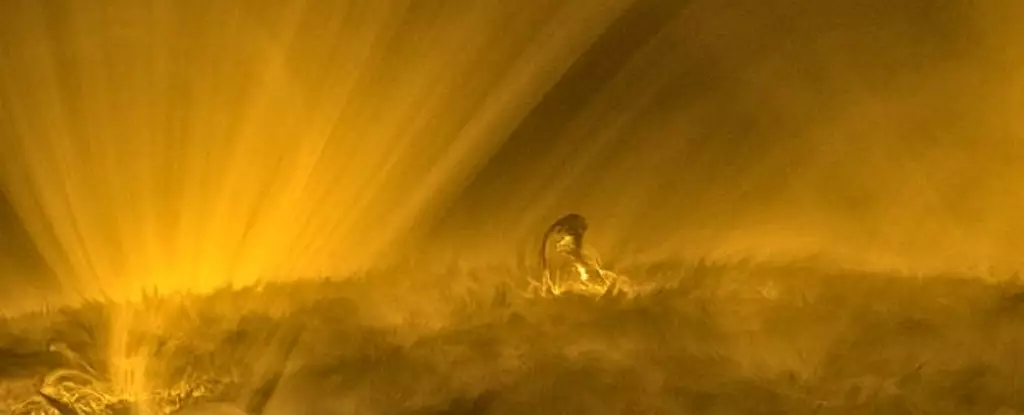The Sun is a familiar sight in our sky, but thanks to ESA’s Solar Orbiter mission, we are now seeing it in a whole new light. With the help of advanced imaging technology, we can now observe the Sun’s lower atmosphere in stunning detail, revealing feathery, hair-like structures made of plasma that follow magnetic field lines.
One of the most striking features captured in the Solar Orbiter video is the coronal moss, which gives the Sun a fluffy appearance. These peculiar structures resemble the moss we find on Earth, but on the Sun, they are concentrated around sunspot groups and large coronal loops. The moss is so hot that it can be challenging to detect with standard instruments, spanning two atmospheric layers, the chromosphere, and corona.
Another interesting feature seen in the video is spicules, tall spires of gas that reach up from the Sun’s chromosphere. These structures can extend up to a height of 10,000 km, adding to the complexity and beauty of the Sun’s dynamic atmosphere.
At around 0:30 in the video, viewers can observe coronal rain, cooler material that falls back towards the Sun’s surface under the influence of gravity. This material is significantly cooler than the surrounding coronal loops, providing valuable insights into the Sun’s complex behavior.
An intriguing moment in the video occurs at about 0:20, where a small eruption is visible in the center of the field of view. Despite being described as small, this eruption is actually larger than Earth, highlighting the immense scale and power of solar events.
Missions like Solar Orbiter, the Parker Solar Probe, and the Solar Dynamics Observatory are revolutionizing our understanding of the Sun. By providing unprecedented views and data, these missions are helping astronomers unravel the mysteries of our star and its impact on the entire Solar System.
The Sun is not only a source of light and warmth but also a dynamic and captivating celestial body. By exploring the Sun’s intricate features and phenomena, we are gaining valuable insights into the fundamental processes that shape our solar neighborhood.


Leave a Reply